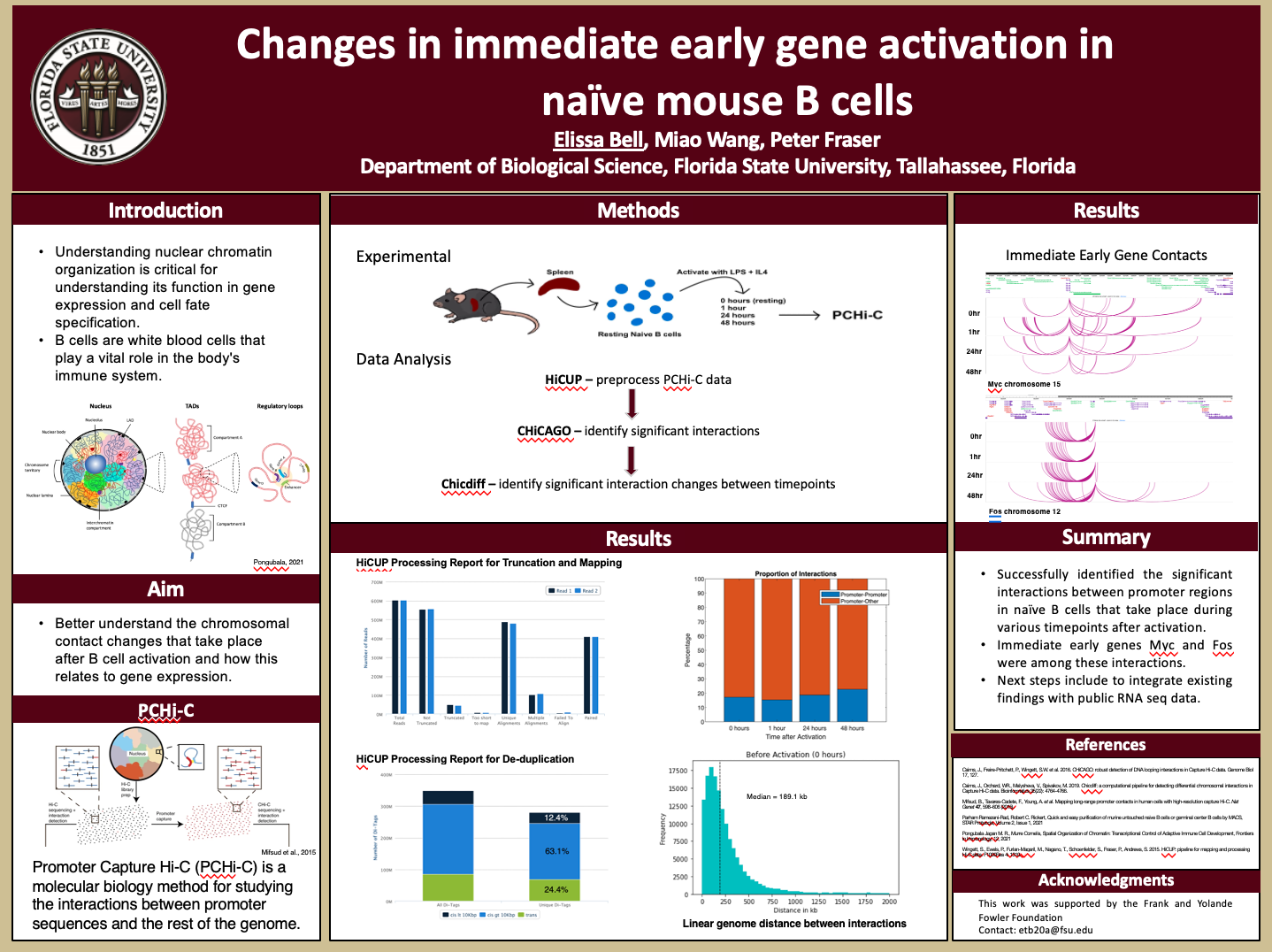Research Symposium
23rd annual Undergraduate Research Symposium, April 6, 2023
Elissa Bell Poster Session 3: 2:45 pm - 3:45 pm/ Poster #153

BIO
My name is Elissa Bell, and I am from Melbourne, FL. I hope to attend medical school after graduating to become a physician-scientist.
Changes in 3D genome architecture during immediate early gene induction of mouse B cells
Authors: Elissa Bell, Peter FraserStudent Major: Biological and Computational Science
Mentor: Peter Fraser
Mentor's Department: Biological Science Mentor's College: Arts and Sciences Co-Presenters:
Abstract
Understanding nuclear chromatin organization is critical for understanding its function in gene expression and cell fate specification. Biochemical techniques, including Hi-C and Promoter-Capture Hi-C, can analyze chromatin 3D conformation and genomic contacts. We will use Promoter Capture Hi-C data from naive mouse B cells to study the changes in 3D genome architecture during immediate early gene induction. B cells are white blood cells that play a vital role in the body's immune system. Upon B cell activation, the expression of several immediate early genes is induced, including Fos, Jun, and Myc protooncogenes, and organizational changes in the chromatin take place. These spatial modifications could result in new genomic interactions, including promoter-enhancer interactions. I will use computational tools such as CHiCAGO and Chicdiff to analyze significant promoter interactions in the data at different time points before and after B cell activation. We will use publicly available RNA-seq and ChiP-seq data to study how epigenetic marks relate to gene expression levels at different time points. These methods will allow us to investigate the changes in immediate early gene expression after B cell activation and determine if these changes are related to changes in enhancer-promoter interactions and 3D genome organization. A better understanding of the chromosomal organizational changes after B cell induction will give insight into notable events after activation, including changes in genomic contacts, gene regulation, and potential implications for disease. We believe we will see changes in the 3D genome architecture in naive mouse B cells after immediate early gene induction.
Keywords: Immediate early gene induction


